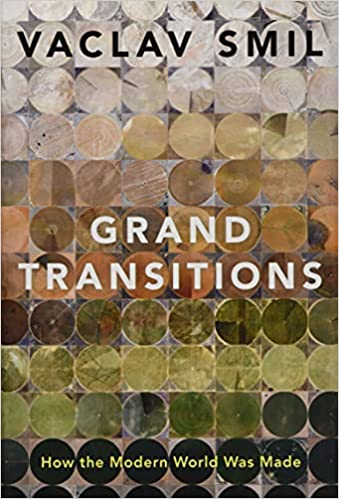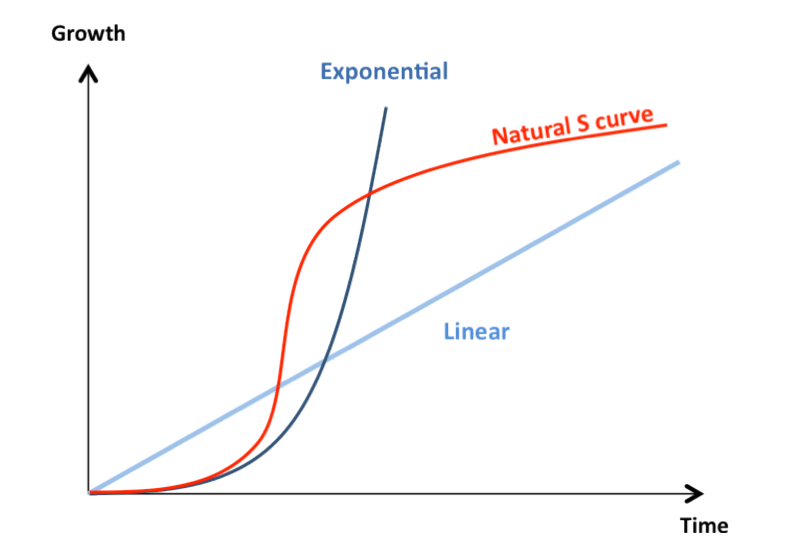You have /5 articles left.
Sign up for a free account or log in.
 Grand Transitions: How the Modern World Was Made by Vaclav Smil
Grand Transitions: How the Modern World Was Made by Vaclav Smil
Published in March 2021.
Can reading Vaclav Smil’s Grand Transitions help us think about the future of higher education?
My latest obsession is the university of 2050.
The reasons have to do with symmetry—2050 is about the same number of years into the future as my undergraduate years are in the past. (Washington University, 1991—history.)
If I can think about the difference between college life when I was a student and college life now, maybe I can use that change between 1990 to 2020 to understand college in 2050. Maybe.
For longtime readers of Smil’s books, Grand Transitions will feel like something of a synthesis. The themes that Smil covers in previous books are present—namely, a view of historical change that gives energy center stage.
Smil’s awareness that even a topic as broad as energy can’t explain how the world became modern and, therefore, will not alone be adequate for understanding the future results in a broadening of perspective. The modern world was created by four interlocking and reinforcing transitions. These include the demographic transition, a process in which populations move from high mortality and high fertility to longer/healthier lives and fewer babies per woman. The agriculture and diet transition is the move from carbohydrates to proteins and fats.
The energy transition describes first the move from people/animal power to fossil fuels and perhaps to renewables in the future. And the economic transition is the result, and sometimes driver, of the three other transitions—describing a world moving from near-universal poverty to one of globally higher living standards coupled with extreme levels of inequality and wealth concentration.
Smil is highly suspicious of grand theories of historical change and is reluctant to provide detailed predictions. For Smil, it is better to stick to the data than to develop elaborate theories.
This perspective means that Grand Transitions describes the creation of the modern world instead of unpacking the causal reasons that brought us from here to there. Missing from this approach is much in the way of human agency.
When it comes to thinking about the university of 2050, I maintain that this future is ours to create. I don’t believe that we are on some path-dependent track, where forces such as technological and demographic change will inevitably create a certain type of university in 30 years.
In truth, Smil would like likely agree with this assessment. Grand Transitions is an excellent counterargument to both the catastrophists and the techno-optimists that predict either doom or overwhelming abundance for the middle of the 21st century.
I like that Smil is concerned about climate change, but not to the degree of existential dread. It is also refreshing to read a renewable-energy champion who recognizes that the energy density and storability of fossil fuels means that they will likely continue to dominate for many decades to come.
In describing the grand transitions of Grand Transitions, Smil often comes back to the perspective that change is more likely logarithmic (and S-shaped) than either linear or exponential. Big historical transitions may move to the flatter part of the curve in the decades to come. Population growth will slow dramatically compared to past decades, as might economic growth.

Source: ResearchGate
This comparison of S-shaped, linear and exponential curves is a potentially helpful way to think about the university of 2050. The changes that higher education will undergo in the next 30 years are unlikely to be either exponential or linear but S-shaped.
The pandemic has caused an exponential growth in digitally mediated learning, a transition that is likely to remain steep for a time but then plateau at some point. In the same way, the higher education cost curve may not follow the same linear (and sometimes exponential) curve into the future. Lower-cost scaled online degrees might change that game.
Smil’s resolutely empirical approach to describing global transitions is deeply satisfying for those hungry for data-driven explanations for historical changes.
For those who wish to develop a vision of the future to create it (including the future of higher ed), reading Grand Transitions is a helpful addition to the mental machinery that will enable us to set about that task.
What are you reading?




